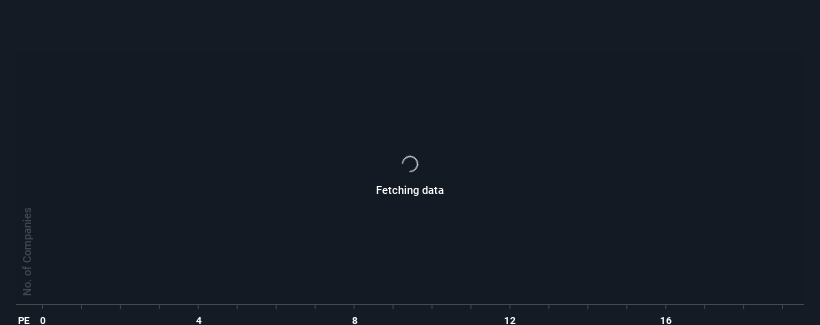- India
- /
- Metals and Mining
- /
- NSEI:JINDALSAW
Jindal Saw Limited (NSE:JINDALSAW) Held Back By Insufficient Growth Even After Shares Climb 26%
Jindal Saw Limited (NSE:JINDALSAW) shares have had a really impressive month, gaining 26% after a shaky period beforehand. This latest share price bounce rounds out a remarkable 321% gain over the last twelve months.
Although its price has surged higher, Jindal Saw's price-to-earnings (or "P/E") ratio of 10.8x might still make it look like a strong buy right now compared to the market in India, where around half of the companies have P/E ratios above 32x and even P/E's above 59x are quite common. Although, it's not wise to just take the P/E at face value as there may be an explanation why it's so limited.
Recent times have been advantageous for Jindal Saw as its earnings have been rising faster than most other companies. One possibility is that the P/E is low because investors think this strong earnings performance might be less impressive moving forward. If not, then existing shareholders have reason to be quite optimistic about the future direction of the share price.
Check out our latest analysis for Jindal Saw

Is There Any Growth For Jindal Saw?
There's an inherent assumption that a company should far underperform the market for P/E ratios like Jindal Saw's to be considered reasonable.
If we review the last year of earnings growth, the company posted a terrific increase of 276%. The latest three year period has also seen an excellent 752% overall rise in EPS, aided by its short-term performance. So we can start by confirming that the company has done a great job of growing earnings over that time.
Shifting to the future, estimates from the two analysts covering the company suggest earnings should grow by 0.4% over the next year. Meanwhile, the rest of the market is forecast to expand by 25%, which is noticeably more attractive.
In light of this, it's understandable that Jindal Saw's P/E sits below the majority of other companies. It seems most investors are expecting to see limited future growth and are only willing to pay a reduced amount for the stock.
What We Can Learn From Jindal Saw's P/E?
Even after such a strong price move, Jindal Saw's P/E still trails the rest of the market significantly. We'd say the price-to-earnings ratio's power isn't primarily as a valuation instrument but rather to gauge current investor sentiment and future expectations.
We've established that Jindal Saw maintains its low P/E on the weakness of its forecast growth being lower than the wider market, as expected. At this stage investors feel the potential for an improvement in earnings isn't great enough to justify a higher P/E ratio. It's hard to see the share price rising strongly in the near future under these circumstances.
And what about other risks? Every company has them, and we've spotted 2 warning signs for Jindal Saw (of which 1 shouldn't be ignored!) you should know about.
You might be able to find a better investment than Jindal Saw. If you want a selection of possible candidates, check out this free list of interesting companies that trade on a low P/E (but have proven they can grow earnings).
New: Manage All Your Stock Portfolios in One Place
We've created the ultimate portfolio companion for stock investors, and it's free.
• Connect an unlimited number of Portfolios and see your total in one currency
• Be alerted to new Warning Signs or Risks via email or mobile
• Track the Fair Value of your stocks
Have feedback on this article? Concerned about the content? Get in touch with us directly. Alternatively, email editorial-team (at) simplywallst.com.
This article by Simply Wall St is general in nature. We provide commentary based on historical data and analyst forecasts only using an unbiased methodology and our articles are not intended to be financial advice. It does not constitute a recommendation to buy or sell any stock, and does not take account of your objectives, or your financial situation. We aim to bring you long-term focused analysis driven by fundamental data. Note that our analysis may not factor in the latest price-sensitive company announcements or qualitative material. Simply Wall St has no position in any stocks mentioned.
About NSEI:JINDALSAW
Jindal Saw
Engages in the manufacture and supply of iron and steel pipes, and pellets in India and internationally.
Adequate balance sheet average dividend payer.
Similar Companies
Market Insights
Community Narratives



